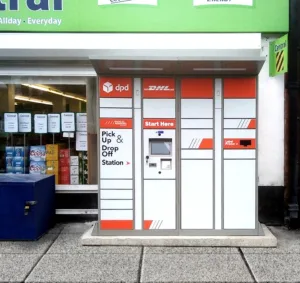By Sean Sherwin-Smith, General Manager, Post Purchase at HelloDone
Ecommerce is failing customers with disabilities. That was the uncomfortable finding of a report from national disability charity Scope in 2019.
The survey of 200 respondents revealed a combination of inaccessible apps and websites were shutting people with disabilities out of online shopping, prompting more than half to abandon purchases with internet retailers.
The last twelve months have only served to exacerbate this accessibility gap. While online shopping quickly became a lifeline for many during the pandemic, the most vulnerable in our society were left cut off and, in some cases, forced to risk their health to buy essential goods.
Home deliveries aren’t working
Panic buying left people with disabilities often unable to secure delivery slots, while those that did faced the prospect of an undignified delivery experience when their goods arrived.
Accessibility issues have long extended to the last mile. And research from Citizens Advice shows that more than a third (39%) of people with disabilities – equal to over 7 million customers – experienced problems with deliveries in a single week last year.
Common problems include customers not having enough time to answer the door, parcels being left in inaccessible places and goods not being delivered on time, or at all.
A £16 billion problem
Not only do retailers have a social responsibility to improve accessibility in the last mile, but there are strong commercial drivers too.
With more than 13 million people living with disabilities in the UK, it’s estimated this group has a combined online spending power of £16 billion. Revenue that retailers risk losing if they fail to address the accessibility gap.
Online shopping now accounts for around a third of total retail sales. So, brands can’t afford to ignore this important consumer segment.
Yet people with disabilities remain chronically underserved in the post-purchase experience.
Closing the accessibility gap
So where do brands start?
First and foremost, retailers must start thinking about consumers across a different range of capabilities – not just the able-bodied customer.
These days, too many websites use ‘copy and paste’ or off-the-shelf templates. Little thought goes into the customer experience or the needs of the end user, particularly those living with disabilities.
Next, start thinking about what the post-purchase experience looks like and how people manage their lives around delivery slots and order updates. In the world of retail, building loyalty with customers is the only game in town if you want to secure repeat purchases and referrals.
By failing to tackle the accessibility gap, you’re excluding one in every five customers – thereby reducing your addressable market and potential revenue base.
The role of assistive technology
Once you choose to engage with the issue, you can begin to work more closely with logistics and technology partners to put accessibility front of mind throughout the purchase journey.
Better product descriptions and colour-contrasting displays have helped improve the user experience for people with disabilities in recent years. But such considerations rarely extend beyond the button.
That is until now. Forward-thinking brands are starting to harness technology to open a dialogue directly with customers during the last mile. Last month, DHL Parcel UK announced it would begin offering new accessibility functions through WhatsApp and Facebook Messenger.
Using the power of AI to enable two-way conversations, retail customers can now inform their driver of accessibility requirements, for pick ups and drop offs fulfilled by the carrier, via the apps they use and love the most.
This includes a ‘Just a Minute’ option which alerts drivers they may need to wait longer at their drop-off point to allow time for customers to get to the door. Shoppers can also message instructions to leave parcels in an accessible ‘safe space’ if they’re not going to be at home.
Unlike traditional accessibility options, which are displayed to customers during checkout, using technology in this way enables retailers to manage accessibility requirements right up until an order reaches the customer’s front door – removing the need for expensive webstore integrations.
Not only does this simplify what can be a costly and resource-intensive process for retailers, it also affords people with disabilities greater control over the post-purchase experience.
Customers are empowered to tell drivers exactly how they want their delivery to be made.
Putting accessibility first
This level of investment from brands also means that customers aren’t expected to bear the cost of assistive technologies. After all, people with disabilities shouldn’t have to pay a premium to receive the same level of care and attention as every other customer.
Rather than viewing accessibility as an ancillary step in the purchase journey – or worse, an afterthought – brands must embrace it as a key commercial driver and benchmark of customer service excellence.
Only when brands start thinking in terms of accessibility-first can they can create a truly inclusive customer experience, which builds the lifetime value of customers and opens up the full online spending power of shoppers.







